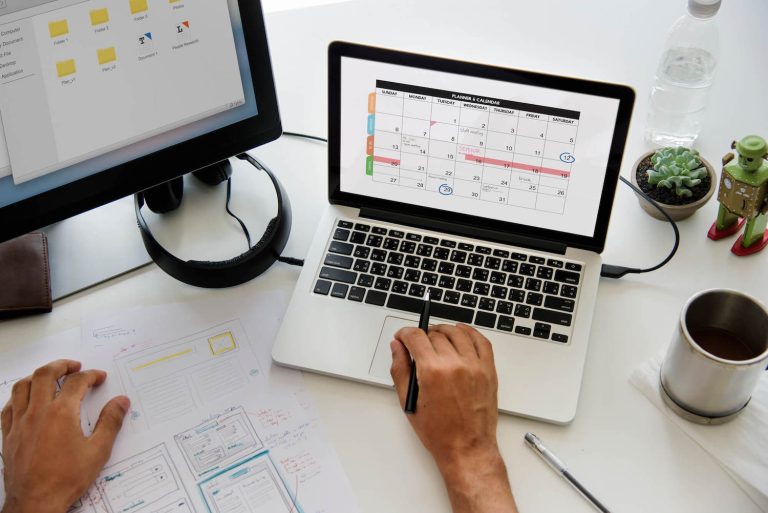The 40/20/40 Rule for Meetings: A Simple Guide to More Productive Meetings
Without any rules, meetings often lack clear agendas, leading to chaotic discussions and wasted time. By combining the 40/20/40 rule and our scheduling tool, you can structure your meetings for maximum productivity. Here’s a simple guide on the 40/20/40 rule for meetings, including tips on implementing a practical system for better meeting outcomes.
What Is the 40/20/40 Rule for Meetings?
The 40/20/40 rule divides meeting effort into three parts: 40% dedicated to pre-meeting preparation, including agenda setting; 20% for the actual meeting, focused on discussion and debate; and 40% for post-meeting follow-up, encompassing documentation and action item assignment. The 40/20/40 rule is designed to make meetings more productive.

With our scheduling tool, we can help you apply the 40/20/40 rule to optimize meeting preparation, execution, and follow-up. This rule encourages better planning and execution, leading to more effective and efficient outcomes.
| Segment | Percentage | Key Activities |
| Preparation | 40% | Agenda setting, pre-reading, objective definition |
| Meeting | 20% | Focused discussion, time management, active participation |
| Follow-Up | 40% | Action item assignment, decision documentation, meeting minutes distribution |
Key Principles of the 40/20/40 Rule
The 40/20/40 rule was designed to enhance productivity by focusing on different phases of a meeting: preparation, execution, and follow-up. It encourages individuals to spend 40% of their time preparing, 20% during the actual meeting, and the remaining 40% on follow-up activities.
- Before the meeting, spend 40% of your effort on planning. Create a clear agenda to help participants know what to expect. This preparation keeps everyone aligned, knowing their roles.
- During the meeting, allocate 20% of your attention. This is the time when you focus on the core agenda. Keep discussions on track, promote active participation, and document key points.
- After the meeting, dedicate another 40% to follow-up. This step turns meeting decisions into action. Send out a summary of the meeting, making sure everyone is clear on their responsibilities.
Ways to Apply the 40/20/40 Framework in Meetings
The 40/20/40 rule for meetings is a simple and effective approach to make meetings more productive. Here’s how you can break down your time into clear stages:
40% Preparation
The 40% preparation phase aims to establish a clear agenda. Thorough preparation leads to more focused and productive meetings. This way, you can avoid disorganized meetings, prevent discussions from going off-topic, and minimize delays.
- Define clear objectives: Clearly state the purpose of the meeting and write down specific, measurable, achievable, relevant, and time-bound (SMART) goals.
- Gather and distribute relevant materials: Send the necessary documents, reports, and data to participants so they have ample time to review them.
- Identify and invite key participants: Carefully select attendees needed for the meeting’s purpose.
- Prepare talking points and anticipate questions: Outline key points you want to convey and anticipate potential questions or challenges.

20% Meeting
The 20% meeting phase is about executing the prepared agenda, facilitating focused discussions, and making decisions efficiently within the allocated time. A well-managed meeting gives participants a chance to contribute. With a structured meeting, you can prevent time overruns.
- Start on time: Begin the meeting promptly, adhere to the scheduled agenda, and use a timer to keep discussions on track and prevent time overruns.
- Facilitate active participation: Create a safe space for discussion and encourage participants to contribute their ideas and insights.
- Capture key decisions and action items: Designate someone to take detailed notes, recording decisions, action items, responsible parties, and deadlines.
- Summarize and confirm next steps: At the end of the meeting, summarize key decisions, action items, and next steps to make sure everyone understands their responsibilities.
40% Follow-Up
The 40% follow-up phase focuses on implementing decisions effectively after the meeting concludes. Consistent follow-up guarantees that decisions are not forgotten and that action items are completed. As you diligently follow up, you can minimize the risk of wasted effort and missed deadlines.
- Assign and track action items: Use a task management tool to track the progress of action items and send reminders to responsible parties as deadlines approach.
- Monitor progress and provide support: Regularly check in with team members to monitor progress and offer assistance if needed.
- Schedule follow-up meetings as needed: If necessary, schedule follow-up meetings to review progress, address outstanding issues, or make further decisions.
- Evaluate meeting effectiveness: What went well? What could be improved? Use this feedback to refine future meetings.
Benefits of Implementing the 40/20/40 Rule
The 40/20/40 rule helps transform meetings into productive sessions. As you follow the 40/20/40 rule, your meetings can be filled with progress and collaboration.
- Dedicating 40% of your time to preparation guarantees that the materials and information are ready before the meeting begins. This minimizes confusion and allows participants to focus on the discussion rather than logistics.
- Spending 20% of the time during the actual meeting helps keep everyone on track. This guarantees the meeting doesn’t run too long and keeps the agenda focused. Participants stay alert and engaged, reducing the risk of boredom at work and sidelined discussions.
- The final 40% is important for following up on what was discussed. This phase helps team members complete their tasks and meet their goals. With a dedicated follow-up, everyone stays accountable, and progress is made.

Related Questions
How Can You Monitor if the 40/20/40 Rule Is Working?
You can determine if the 40/20/40 rule is working by observing a reduction in meeting length and an increase in actionable outcomes. The consistent completion of assigned action items and positive feedback from attendees regarding meeting efficiency are strong indicators of its success.
What Tools Can You Use for Effective 40/20/40 Meetings?
Different tools can enhance your use of the 40/20/40 rule in meetings. To manage meeting agendas and notes, try digital calendars or task management apps.
Does the 40/20/40 Rule Apply to Different Types of Meetings?
The core principles of the 40/20/40 rule are adaptable to various meeting types. The idea behind this rule is not limited to business settings as it applies to any situation where structured communication and careful planning are vital. However, adjustments may be needed for very brief, informal check-ins or highly complex, multi-day workshops.
Conclusion
Understanding the 40/20/40 rule can transform how you approach meetings. When you divide your time into pre-meeting preparation, the meeting itself, and post-meeting follow-up, you can make sure that each phase gets the attention it deserves. Paired with our scheduling tool, you can handle more productive meetings.
[post-cta type=”dark” title=”Want to improve your customer’s scheduling experience?” subtitle=”Look no further, TinyCal simplifies appointment scheduling for you and your customers. Click the button below to create your free account. No credit-card required.” button-text=”Create My Free Account” button-link=”https://app.tinycal.net/auth/register” margin-top=”100″ margin-bototm=”100″]







